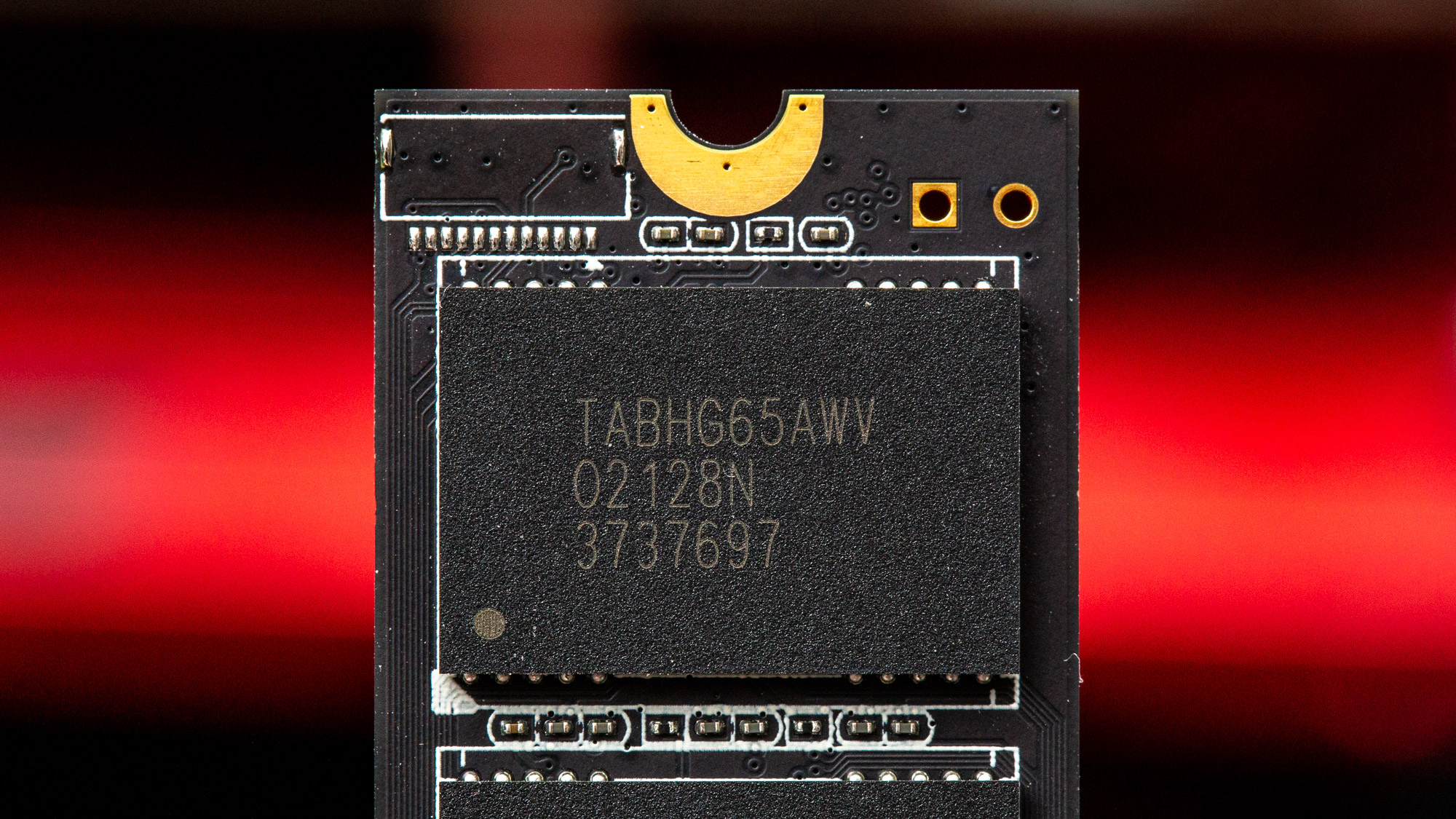Tom's Hardware Verdict
Seagate’s PCIe 4.0-equipped IronWolf 525 SSD delivers solid, reliable performance and high endurance for NAS applications, but is quite costly.
Pros
- +
+ High endurance ratings
- +
+ Adequate sustained write speed for small 10GbE networks
- +
+ 5-year warranty and data recovery services for 3 years
- +
+ Software support
Cons
- -
Costly
- -
Not as efficient as competitors
- -
Runs hot during heavy workloads
Why you can trust Tom's Hardware
Built with a tried-and-true PCIe 4.0 NVMe SSD controller and TLC flash, Seagate's IronWolf 525 aims to be a top pick for our list of best SSDs if you're looking to upgrade your NAS with a speedy SSD volume, or if you choose to go the caching or tiering route to maximize overall capacity. NAS SSDs are great for commercial use and can help avid data hoarders speed up access to their files, especially if they hoard more diverse file types than 'just' video.
PCIe 4.0-enabled and designed to handle demanding multi-user environments by delivering low latency during intensive workloads, Seagate's IronWolf 525 stacks up to be an overkill companion for most personal NAS devices. The drive is built to last, too, with a 0.7 drive writes per day (DWPD) endurance rating paired with a five-year warranty and three years of Rescue Data Recovery Services. As a result, it's ready for almost any workload you can throw its way, but it is costly and not quite enterprise-grade.
Specifications
| Product | 500GB | 1TB | 2TB |
|---|---|---|---|
| Pricing | $129.99 | $199.99 | $399.99 |
| Capacity (User / Raw) | 500GB / 512GB | 1000GB / 1024GB | 2000GB / 2048GB |
| Form Factor | M.2 2280 | M.2 2280 | M.2 2280 |
| Interface / Protocol | PCIe 4.0 x4 / NVMe 1.3 | PCIe 4.0 x4 / NVMe 1.3 | PCIe 4.0 x4 / NVMe 1.3 |
| Controller | PS5016-E16 | PS5016-E16 | PS5016-E16 |
| DRAM | DDR4 | DDR4 | DDR4 |
| Memory | Kioxia BiCS4 96L TLC | Kioxia BiCS4 96L TLC | Kioxia BiCS4 96L TLC |
| Sequential Read | 5,000 MBps | 5,000 MBps | 5,000 MBps |
| Sequential Write | 2,500 MBps | 4,400 MBps | 4,400 MBps |
| Sustained Sequential Read | 3,300 MBps | 4,350 MBps | 4,300 MBps |
| Sustained Sequential Write | 525 MBps | 995 MBps | 965 MBps |
| Random Read | 420,000 IOPS | 760,000 IOPS | 740,000 IOPS |
| Random Write | 630,000 IOPS | 700,000 IOPS | 700,000 IOPS |
| Sustained Random Read | 230,000 IOPS | 445,000 IOPS | 425,000 IOPS |
| Sustained Random Write | 10,800 IOPS | 19,500 IOPS | 19,500 IOPS |
| Security | Non-SED (TCG Pyrite) | Non-SED (TCG Pyrite) | Non-SED (TCG Pyrite) |
| Endurance (TBW) | 700 TB | 1,400 TB | 2,800 TB |
| Part Number | ZP2000NM30002 | ZP1000NM30002 | ZP500NM30002 |
| Warranty | 5-Years | 5-Years | 5-Years |
Seagate’s IronWolf 525 is available in popular capacities of 500GB up to 2TB. The drives are expensive, though, with similar or even higher price points than the best PCIe 4.0 SSDs we’ve tested, weighing in at roughly $0.20-0.26 per gigabyte at the time of publishing.
The high price point is somewhat justified — Seagate backs the IronWolf 525 with solid write endurance ratings of up to 1,400TB per terabyte of capacity within its five-year warranty, which is more than double the Samsung 980 Pro. Seagate also includes a robust three-year Rescue Data Recovery Service Plan for the IronWolf 525 alongside the standard five-year warranty. So if your drive fails within the plan’s coverage, you can go ahead and send it in for an attempt at data recovery.
Seagate rates the IronWolf 525 to deliver sequential read/write speeds of up to 5.0/4.4 GBps and up to 760,000/700,000 random read/write IOPS in best-case scenarios. However, Seagate also rates the IronWolf 525’s performance in worst-case sustained scenarios, too. When tasked with heavy read/write streams, the IronWolf 525 can sustain speeds of up to 4,450/965 MBps read/write and up to 445,000/19,500 random read/write IOPS.
The IronWolf 525 supports Trim, secure erase (Format NVM command), S.M.A.R.T. data reporting, and for security, it supports AES-256 encryption, but it is not a Self-Encrypting Drive (SED) which requires encryption key management on top of an AES-256 encryption engine. As such, the IronWolf 525 is only TCG-pyrite (non-SED) compliant, not TCG OPAL compliant.
Software
Furthermore, the Seagate IronWolf 525 has various software support including SeaTools to diagnose and monitor the SSDs and a free-to-use version of Acronis True Image called DiscWizard to clone your data to your new Seagate SSD within a Windows environment.
Get Tom's Hardware's best news and in-depth reviews, straight to your inbox.
When installed into a compatible NAS system, you can utilize IronWolf Health Management (IHM) to monitor your system and offer preventative actions to secure your data if issues arise. This software is accessible via most NAS providers’ storage managers including Asustor, QNAP, QSAN, Synology, Thecus, and TerraMaster.
A Closer Look
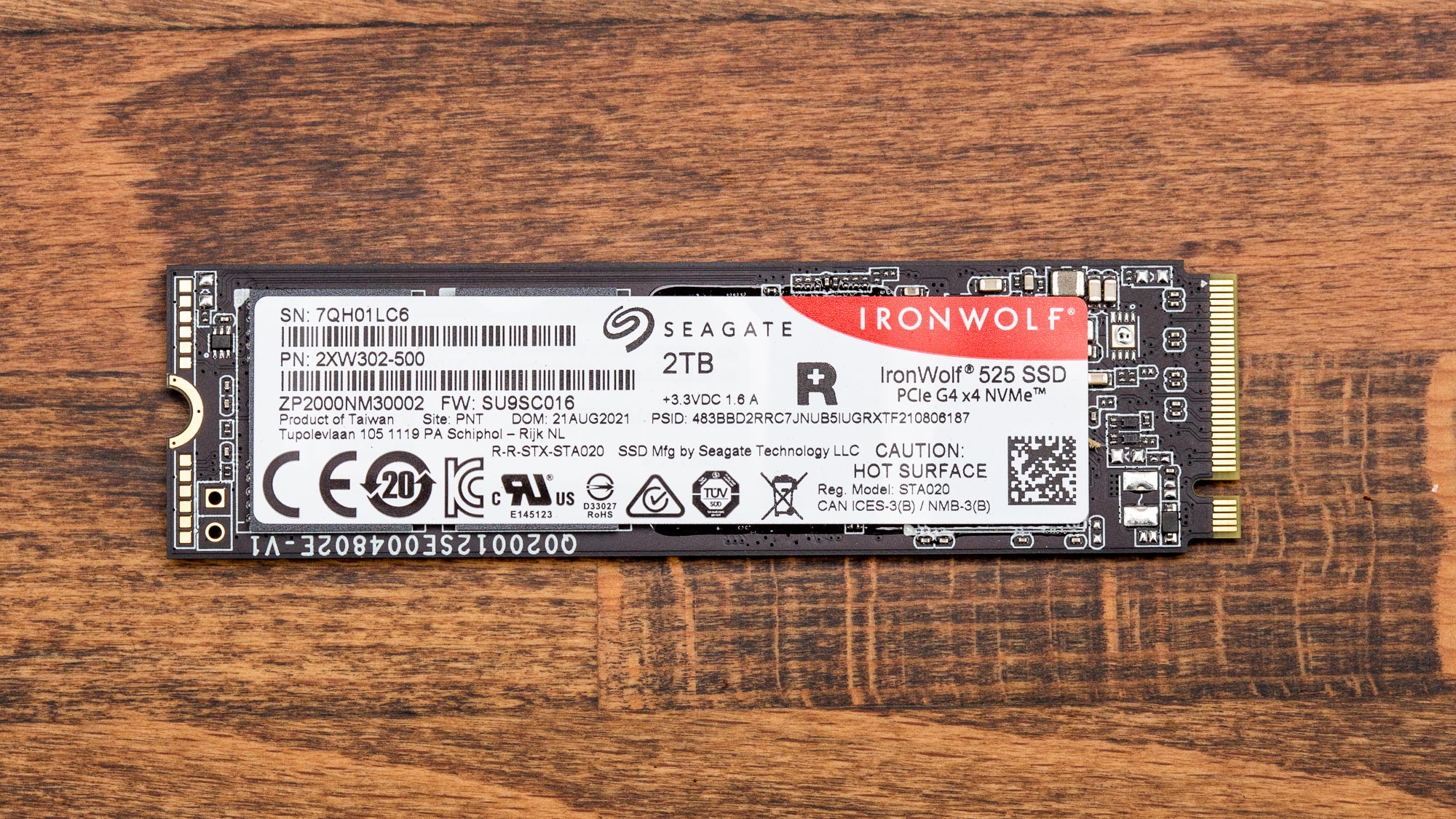
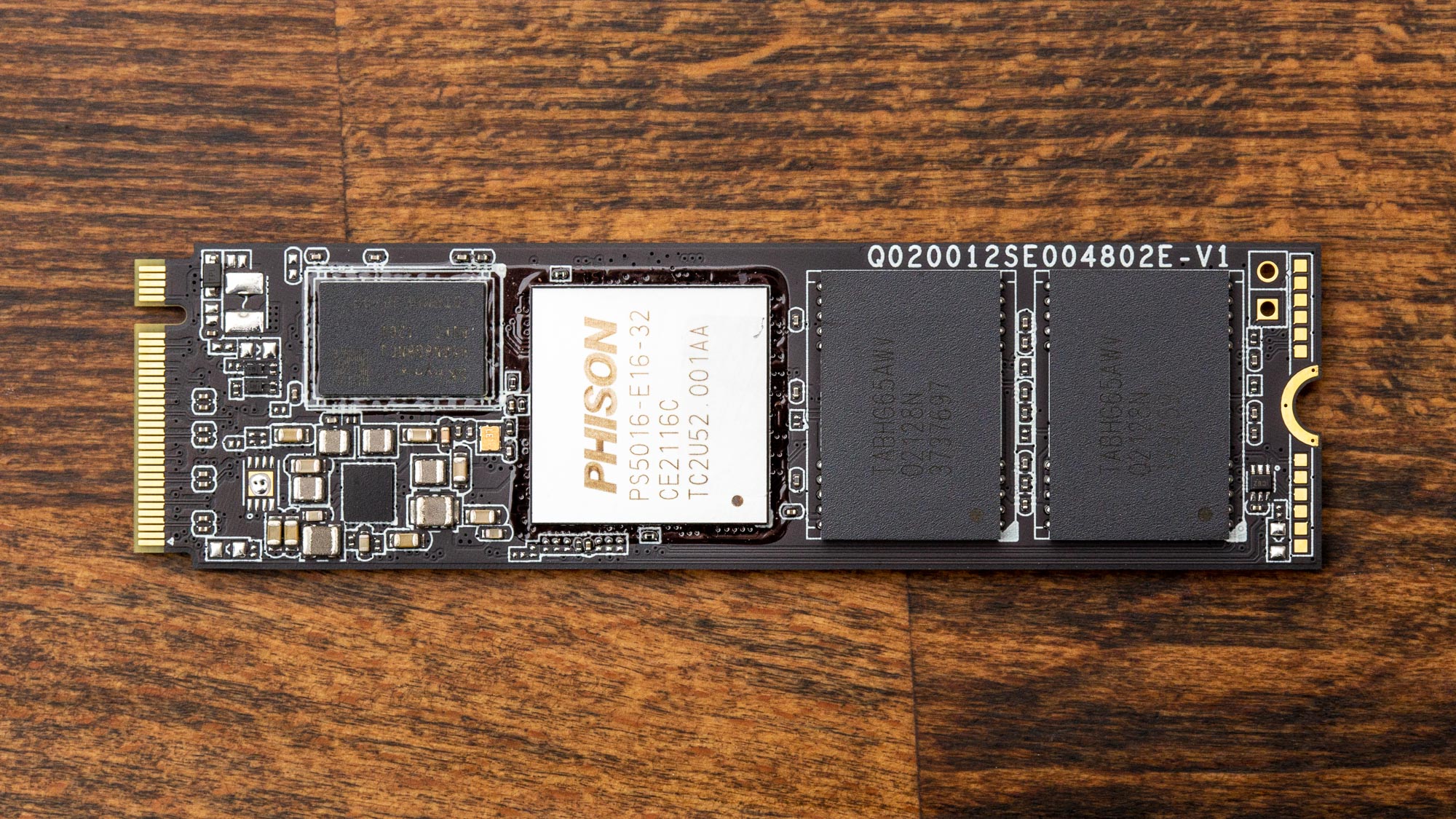

Seagate's IronWolf 525 comes in an M.2 2280 double-sided form factor at all capacities and features a tasteful black PCB, unlike older generation SSDs. Similar to our experience with the new WD Blue SN570, the front label design on our sample does not match some of the images of the SSD in the company's marketing documents, but that's a minor consideration given that it will be hidden in your NAS.
interestingly, the company went as far as to write “CAUTION HOT SURFACE” in bold text on the label. You'll see why in the power tests on the following page.
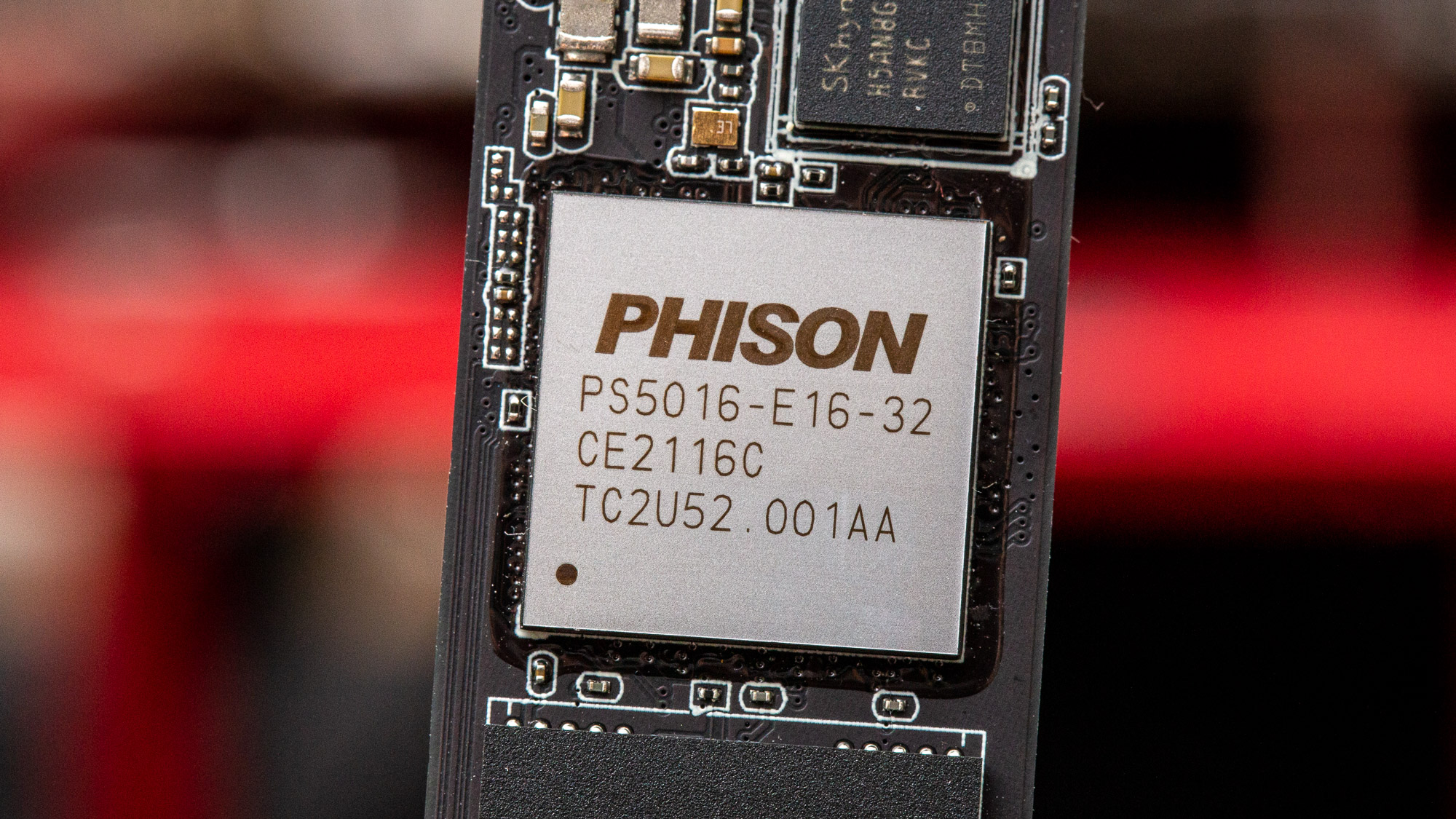
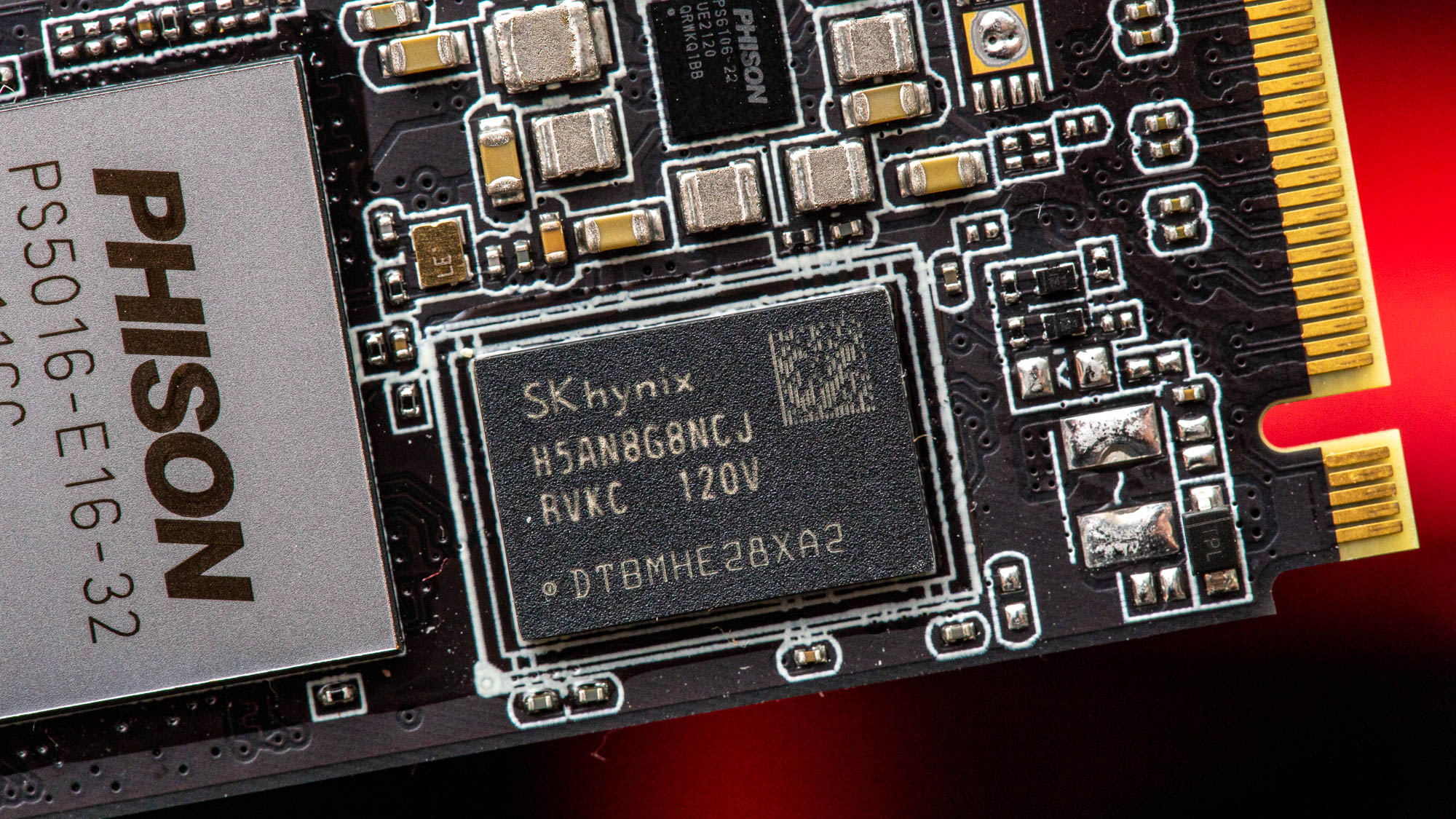
Underneath the label lies Phison's eight-channel PS5016-E16 PCIe 4.0 x4 NVMe 1.3 controller. This controller's PCIe 4.0 interface powers past the best PCIe 3.0 SSDs in sequential workloads, but because it is heavily based on the Phison E12's architecture, it is not quite as potent as Phison's newer E18 controller that ships in the Seagate FireCuda 530, or competing SSDs with homegrown controllers like the Samsung 980 Pro or WD Black SN850.
The E18 features a multi-core architecture with two ARM Cortex-R5 primary cores clocked at 733MHz, a dual-core co-processor (CoXProcessor 2.0), and dedicated DRAM for storing metadata. Features like end-to-end data protection, power state management, and thermal throttling capability are supported. In addition, the Phison 4th-Gen LDPC ECC engine ensures data integrity.
Seagate outfitted our 2TB IronWolf 525 sample with two 8Gb SK hynix’s DDR4 chips, one on each side. Our sample also has thirty-two dies of Kioxia’s BiCS4 96-Layer TLC flash. Each die is 512Gb and features a dual-plane architecture, half that of the latest BiCS5 112-Layer TLC shipping in competing SSDs. Seagate overprovisions the flash by roughly 10% for bad block management and garbage collection, among other background tasks.
MORE: Best SSDs
MORE: How We Test HDDs And SSDs
MORE: All SSD Content

Sean is a Contributing Editor at Tom’s Hardware US, covering storage hardware.
